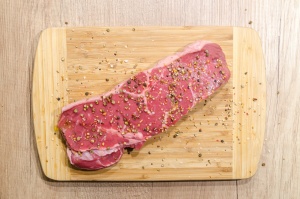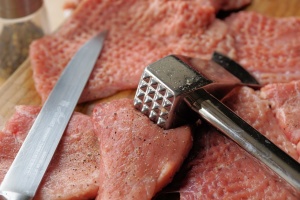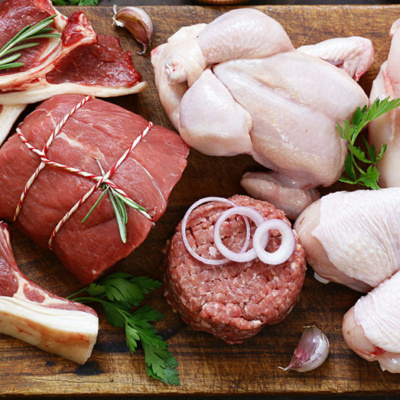top of mind news
- Maximize Enjoyment And Minimize Risk: Solutions To Improve Your Front-of-house
- The COVID Pandemic In 7 Charts
- Going Modular – Benefits of Modular Construction in the Restaurant Industry
- Operators Say A ‘Living Wage’ Won’t Kill Them—if Some Key ‘If’s’ Are Met
- Outsourcing Restaurant Services
Poultry
 Actual broiler slaughter for the week ending March 13th was revised lower, but still came in about even with a year ago. Last week’s chicken harvest was, also estimated to be about steady with last year, and expect this trend of mostly steady to slightly lower throughput to persist in the near term. The chicken parts markets are moving well because both retail and foodservice interest is active. Demand for the dark meat parts continues to pick up also, with the leg quarter market now running above year ago levels. The chicken wing markets remain mostly steady to firm in the mid-$2.80s, and, while we’ve been expecting some price relief, no signs of such have unfortunately been evident.
Actual broiler slaughter for the week ending March 13th was revised lower, but still came in about even with a year ago. Last week’s chicken harvest was, also estimated to be about steady with last year, and expect this trend of mostly steady to slightly lower throughput to persist in the near term. The chicken parts markets are moving well because both retail and foodservice interest is active. Demand for the dark meat parts continues to pick up also, with the leg quarter market now running above year ago levels. The chicken wing markets remain mostly steady to firm in the mid-$2.80s, and, while we’ve been expecting some price relief, no signs of such have unfortunately been evident.
Beef
Last week’s cattle kill fell to a modest 624k head, 5.5% smaller than the year prior, causing beef output to be 5% under a year ago. The USDA beef cutouts found some support late last week, but losses amongst the end meats weighed on the weekly Choice and Select average cutout values. But middle meats continued higher. The beef grinds were lower across the board, with the 73% and 75% trim leading the losses on decent weekly load counts but the beef 50% trim market rose to the mid-$0.40s. Despite 50% beef trim prices down 17%-20% (y/y), trade volumes are light. Anticipate 50% beef trim price support into the summer.
Pork
Hog harvests last week remained near 2.5 million head, leaving pork production down 9.1% from year ago levels, where last year the industry was ramping up ahead of the COVID closures. Price strength continues to mount across the pork complex, with bellies and spareribs influencing last week’s gains. Additionally, the pork 42% trim market had a blowout to end the week, jumping over the $1.00 mark for the first time since at least 2013. With restaurant reopenings looking likely this spring, sausage and hotdog demand is high, boosting pork trim demand.
THE SEA
Seafood
The snow crab markets remain expensive. U.S. snow crab imports were up 1.6% from the previous year during February. However, the Alaskan Bering Sea snow crab fishing season remains fairly slow going. As of March 19th, just 54% of the quota had been landed. The Newfoundland fishing season will occur in the coming months which should add to the current snow crab supply.
THE GARDEN
Produce
The lettuce markets have been fairly steady during the last week. Demand is improving for lettuce due to various states lifting dining and school restrictions. The lettuce harvest has remained solid with iceberg shipments as of late tracking near 7% above year ago levels. History suggests that some iceberg lettuce price relief could be impending. The five-year average move for that market is a decline of 21% during the next two weeks. The avocado markets continue to increase and are expected to remain expensive during this spring.
THE KITCHEN SINK
Dairy
CME cheese block and barrel prices were mixed last week but were nearly on par with a year ago. CME spot butter prices finished down last week but are at levels not seen since July. Per the USDA, U.S. February milk production was up 2.1% (y/y). The number of milk cows in February was up 0.9% (y/y) and grew by 3k head (m/m). The milk-per-cow yield in the month was up 1.2% (y/y). Anticipated big milk output this spring which will boost cheese and butter manufacturing. Still, engaging U.S. cheese and butter prices will support exports. This factor and better restaurant demand should keep dairy prices firm.
Grains
The food oil markets remain supported with spot soybean oil setting multi-year highs once again. Oilseed supplies from South America are expected to modestly improve during the next several weeks. This could bring some modest price relief to the food oil markets which is being reflected in the soybean related futures markets.
Oil
Nearby WTI crude oil futures last week finally finished lower (w/w) but are up 26.6% this year. Improving travel activity and resurfaced Middle East geopolitical tensions will likely keep crude oil and petroleum prices supported moving forward.












